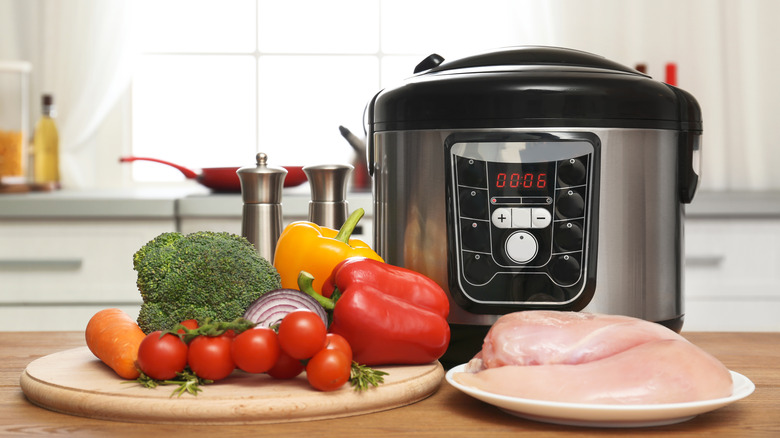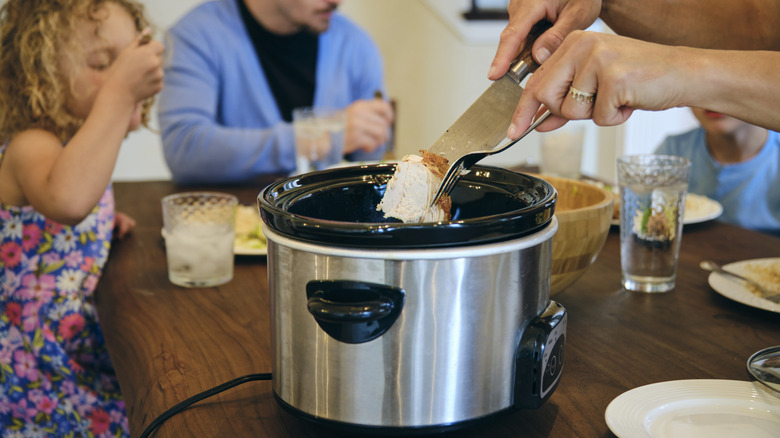Slow Cooking Chicken? Don't Put It At The Bottom
Slow cookers are a lifesaver for busy people who still want to enjoy a home-cooked meal. They're famous for their simplicity and "set it and forget it" features. But as simple as they are, there are a few fundamental principles and techniques that many aren't aware of that can make a notable difference in how your dish turns out. One involves precisely where you put your chicken when cooking the versatile protein.
Not layering is one of the most common and significant mistakes everyone makes when using the slow cooker. You should always put the chicken on top of other ingredients, like vegetables or aromatics, not mixed in or below. This layering keeps your chicken from drying out during the long cooking process by protecting it from direct contact with the heating element. In addition, it will infuse the rest of your ingredients with rich chicken flavor as the juices drip into the mixture. The juice and rendered fat prevent sticking, as well. Placing vegetables or starches, like potatoes or carrots, close to the heat allows them to develop the proper texture and flavor before the chicken overcooks.
The finer points of layering and slow cooking
This is a good rule of thumb for chicken, though it's not necessarily true for all slow cooker dishes. Some cooks may flip the script for tougher cuts of meat like roasts or stew beef, as these need longer to break down. Placing vegetables and other ingredients on top will keep them from turning to mush over long cooking times.
Layering is critical, but there are other fine points to master when using your slow cooker. For one, it can be helpful to quickly sear meats before adding them, as this develops flavors that can't be created solely by slow cooking. You should also double-check to ensure you don't overfill your slow cooker. This will end up steaming your food rather than simmering it. Most importantly, as tempting as it may be to take a peek, leave the lid on. Removing the lid drops the steady temperature these devices require, extending cooking time and resulting in a more uneven product.

